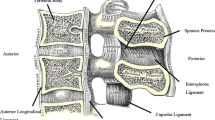Abstract
An experimental study is undertaken to examine the dynamic stress–strain characteristics of ligaments from the human cervical spine (neck). Tests were conducted using a tensile split Hopkinson bar device and the engineering strain rates imposed were of the order of 102∼103/s. As ligaments are extremely soft and pliable, specialized test protocols applicable to Hopkinson bar testing were developed to facilitate acquisition of reliable and accurate data. Seven primary ligaments types from the cervical spines of three male cadavers were subjected to mechanical tests. These yielded dynamic stress–strain curves which could be approximated by empirical equations. The dynamic failure stress/load, failure stain/deformation, modulus/stiffness, as well as energy absorption capacity, were obtained for the various ligaments and classified according to their location, the strain rate imposed and the cadaveric source. Compared with static responses, the overall average dynamic stress–strain behavior foreach type of ligament exhibited an elevation in strength but reduced elongation.
Similar content being viewed by others
References
Noyes FR, Delucas JL, Torvik PJ (1974) Biomechanics of anterior cruciate ligament failure: an analysis of strain-rate sensitivity and mechanisms of failure in primates. J Bone Jt Surg 56-A(2):236–253.
Peterson RH, Woo, SL-Y (1986) A new methodology to determine the mechanical properties of ligaments at high strain rates. J Biomech Eng 108:365–367.
Haut TL, Haut RC (1997) The state of tissue hydration determines the strain-rate-sensitive stiffness of human patellar tendon. J Biomech 30(1):79–81.
Wren TAL, Yerby SA, Beaupré GS, Carter DR (2001) Influence of bone mineral density, age, and strain rate on the failure mode of human achilles tendons. Clin Biomech 16:529–534.
Crowninshield ED, Pope MH (1976) the strength and failure characteristics of rat medial collateral ligaments. J Trauma 16(2):99–105.
Moroney SP, Schultz AB, Miller JAA, Andersson GBJ (1988) Load-displacement properties of lower cervical spine motion segments. J Biomech 21(9):769–779.
Crisco JJ III, Panjabi MM, Dvorak J (1991) A model of the alar ligaments of the upper cervical spine in axial rotation. J Biomech 24(7):607–614.
Nightingale RW, Winkelstein BA, Knaub KE et al. (2002) Comparative strengths and structural properties of the upper and lower cervical spine in flexion and extension. J Biomech 35:725–732.
Yoganandan N, Pintar F, Cusick JF (2002) Biomechanical analyses of whiplash injuries using an experimental model. Accident Anal Prev 34:663–671.
Yoganandan N, Pintar FA (1997) Inertial loading of the human cervical spine. J Biomech Eng 119:237–240.
Panjabi MM, Cholewicki J, Nibu K, Babat LB, Dvorak J (1998) Simulation of whiplash trauma using whole cervical spine specimens. Spine 23(1):17–24.
Chazal J, Tanguy A, Bourges M, Gaurel G, Escande G, Guillot M, Vanneuville G (1985) Biomechanical properties of spinal ligaments and a histological study of the supraspinal ligament in traction. J Biomech 18(3):167–176.
Myklebust JB, Pintar F, Yoganandan N et al. (1986) Tensile strength of spinal ligaments. Spine 13(5):526–531.
Yoganandan N, Kumaresan S, Pintar FA (2000) Geometric and mechanical properties of human cervical spine ligaments. J Biomech Eng 122:623–629.
Yoganandan N, Pintar F, Butler J et al. (1989) Spine 14(10):1102–1109.
Panjabi MM, Crisco JJ III, Lydon C, Dvorak J (1998) The mechanical properties of human alar and transverse ligaments at slow and fast extension rates. Clin Biomech 13(2):112–120.
Clark CR et al. (1998) Chapter 1: anatomy of the cervical spine. In: The cervical spine, 3rd edn. ISBN 0397515359.
Riemersma DJ, Schamhardt HC (1982) The Cryo-jaw, a clamp designed for in vitro rheology studies of horse digital flexor tendons. J Biomech 15:619–620.
Lindholm US (1971) In: Bunshah RF (ed.), Techniques in metals research, vol 5. Part 1. Interscience, New York.
Kolsky H (1949) An investigation of the mechanical properties of materials at very high rates of loading. Proc Phys Soc B62:676–701.
Chen W, Zhang B, Forrestal MJ (1999) A split Hopkinson bar technique for low-impedance materials. Exp Mech 39(2):81–85.
Wang LL, Labibes K, Azari Z, Pluvinage G (1994) Generalization of split Hopkinson bar technique to use viscoelastic bars. Int J Impact Eng 15(5):669–686.
Zhao H, Gary G, Klepaczko JR (1997) On the use of a viscoelastic split Hopkinson pressure bar. Int J Impact Eng 19(4):319–330.
Elliott DM, Setton LA (2001) Anisotropic and inhomogeneous tensile behavior of the human annulus fibrousus: experimental measurement and material model predictions. J Biomech Eng 123:256–263.
Kwan MK, Woo SL-Y (1989) A structural model to describe the nonlinear stress–strain behaviour for parallel-fibered collagenous tissues. J Biomech Eng 111:361–363.
Savelberg HHCM, Kooloos JGM, Huiskes R, Kauer JMG (1993) An indirect method to assess wrist ligament forces with particular regard to the effect of preconditioning. J Biomech 26:1347–1351.
Carlstedt CA, Skagervall R (1986) A model for computeraided analysis of biomechanical properties of the plantaris longus tendon in the rabbit. J Biomech 19:251–256.
Morgan FR (1960) The mechanical properties of collagen fibers: Stress-strain curves. J Soc Leath Trades Chem 44:170–182.
Elden HR (1968) Physical properties of collagen fibers. In: Hall DA (ed.), International review of connective tissue research, vol 24. Academic Press, New York, pp. 283–348.
Klisch SM, Lotz JC (2000) A special theory of ibphasic mixtures and experimental results for human annulus fibrosus tested in confined compression. J Biomech Eng 122:180–188.
Author information
Authors and Affiliations
Corresponding author
Rights and permissions
About this article
Cite this article
Shim, V.P.W., Liu, J.F. & Lee, V.S. A Technique for Dynamic Tensile Testing of Human Cervical Spine Ligaments. Exp Mech 46, 77–89 (2006). https://doi.org/10.1007/s11340-006-5865-2
Received:
Accepted:
Published:
Issue Date:
DOI: https://doi.org/10.1007/s11340-006-5865-2




